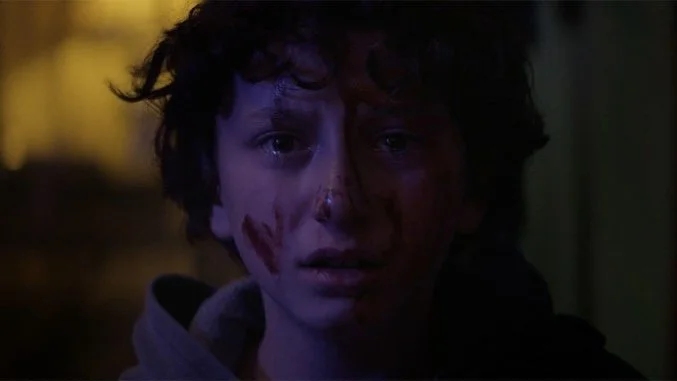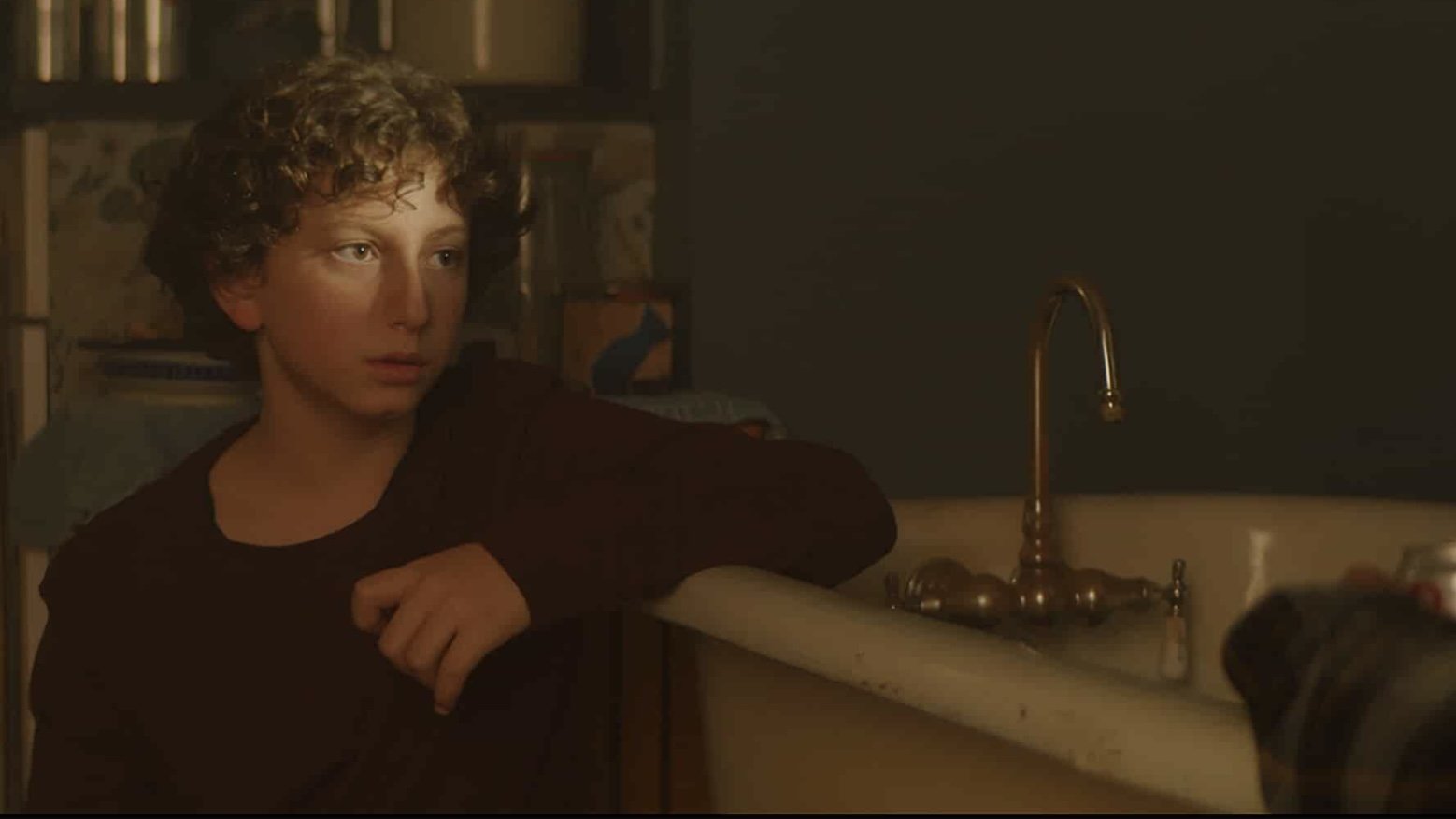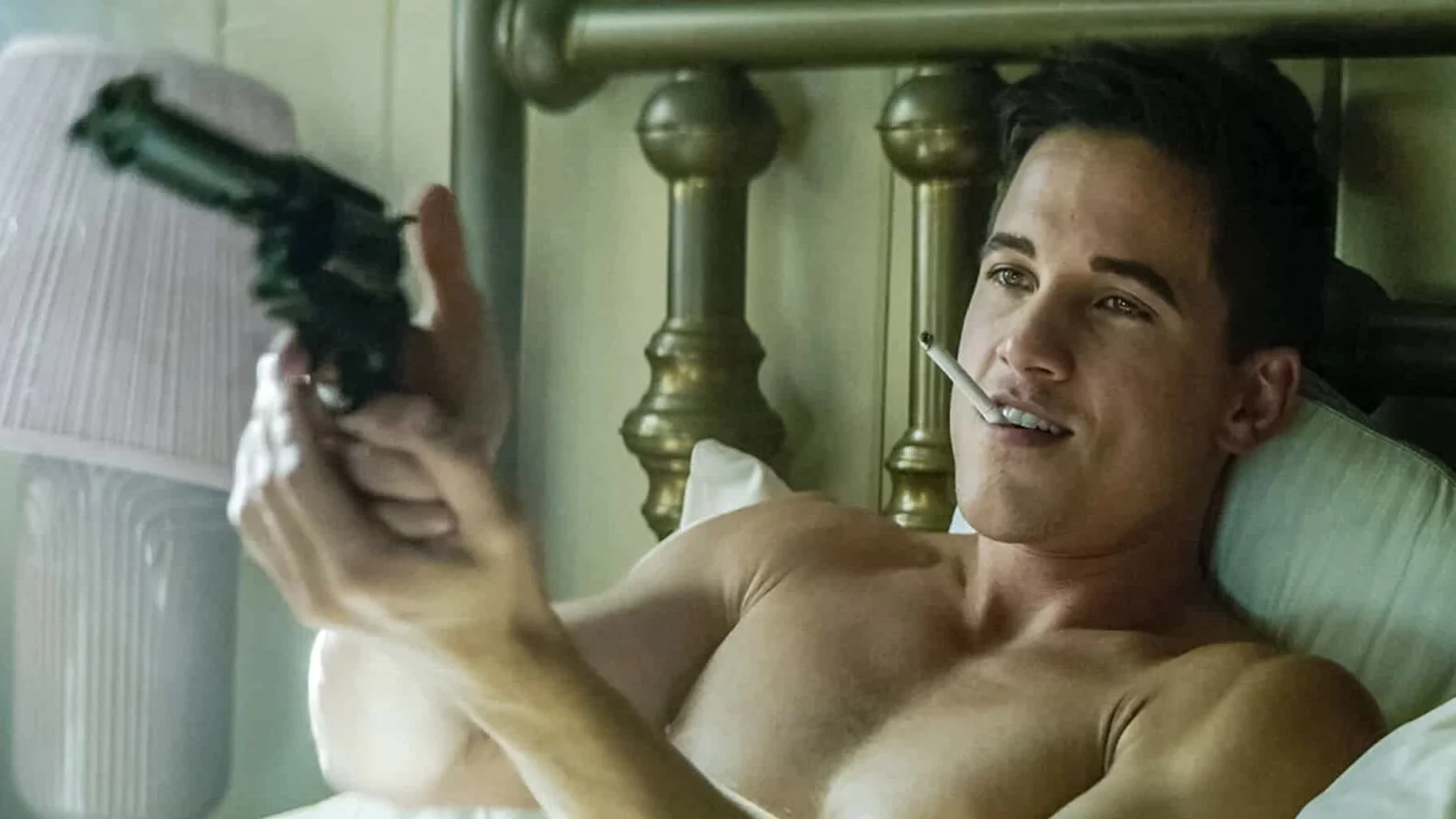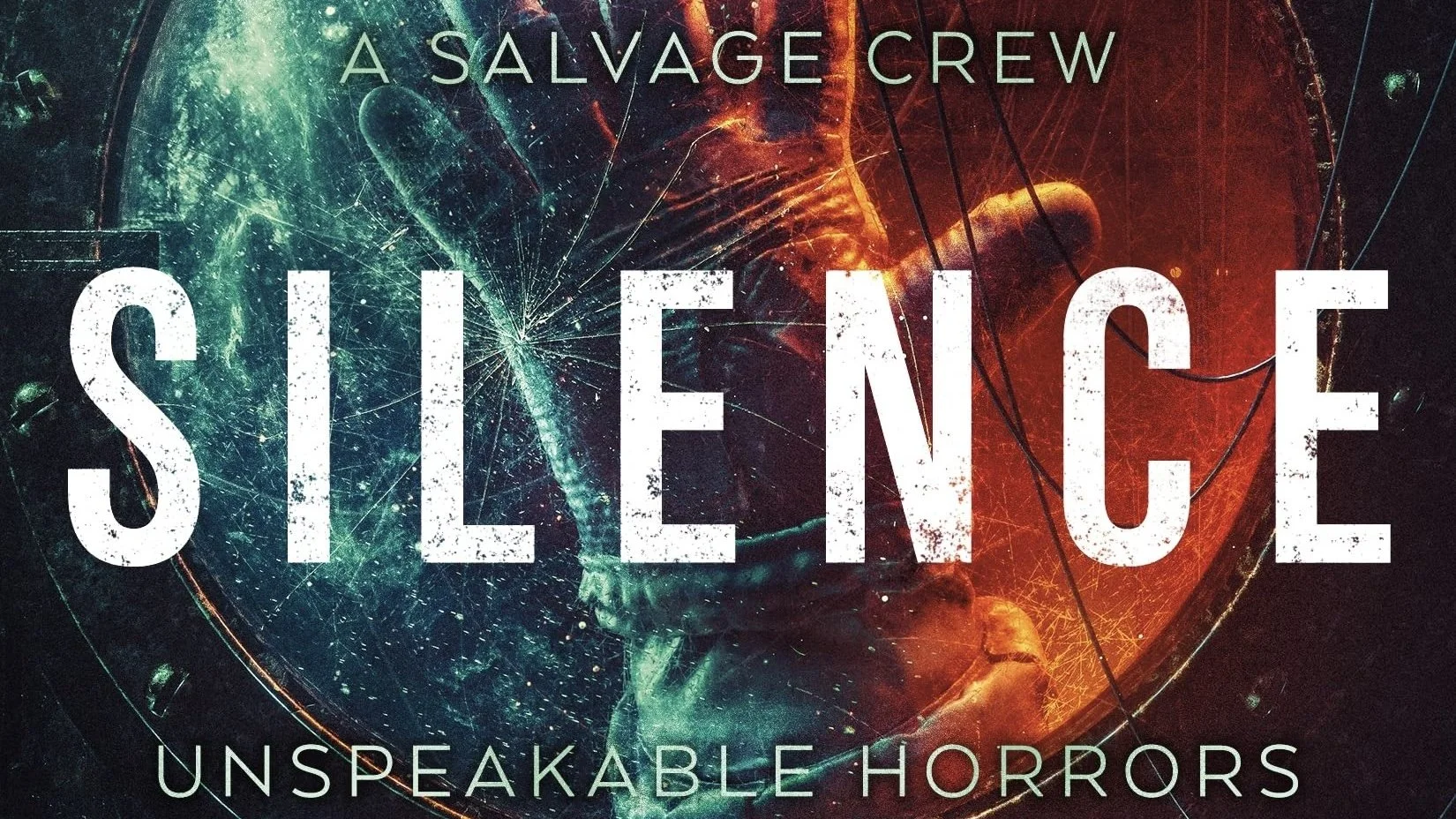Film Review — "Slapface"
It’s always nice when a horror movie begins with a scene that immediately makes me uncomfortable. Part of what makes Slapface’s visceral opening so unnerving is its simplicity: Recently orphaned brothers, the adolescent Lucas and the adult Tom, sit opposite one another and take turns slapping each other across the face. Back and forth. Several times. Hard. I found this “game” very difficult to watch—and listen to, frankly. Is it abuse, point blank? Or a twisted coping technique? Whatever its unhealthy nature, the game quickly establishes just how much of Lucas’ life is defined and shaped by violence and pain.
The manifestation of a character’s trauma into a monster (or, a witchy ogre in this case) is very en vogue, and Jeremiah Kipp’s adaptation of his own short film joins the fold. The tall, cloaked specter with a haggish nose that emerges from the shadows of Lucas’ anguish looks like an illustration straight out of a book of folklore. And the rural woodland setting complements its vibe. This grim reaper-esque phantom is a stand-in for a lot of the things ailing Lucas. Grief. Loneliness. Depression. Poverty. And, most of all, bullying.
August Maturo as Lucas
When he’s not experiencing some form of agony at home, Lucas runs into it anytime he leaves his house. The bullies Lucas faces on a daily basis are not reproductions of the cookie-cutter, two-dimensional tormentors of cinema past. The sadistic-out-of-boredom Donna and Rose (and the acquiescent-to-a-fault Moriah) feel much truer to life than, say, Biff Tannen and Ace Merrill and Scut Farkus. (Then again, I wasn’t an 80s kid…) Sure, those guys have their place in teen movie history for a reason, but these girls aren’t quite as… cartoonishly villainous? (Sorry, 80s kids.)
Sisters Donna and Rose clearly live fairly comfortable lives—at least, their existence seems much more leisurely and worry-free than just about anyone else in this town. So, what’s there to do when you have everything? Beat those who have less than you even further down, of course! (Yeah, their off-screen interior lives could suck more than we realize, but that’s not canon right now, so fuck them.) I could see these two growing up to be Real Housewives of the Hudson River Valley. They align their toxicity in order to inflict the utmost harm possible.
And Lucas is the perfect target for them. He’s smaller, presumably weaker, and emotionally damaged, which August Maturo communicates so well via facial resonance and the way he plays Lucas so that he deliberately lacks spacial presence. Child actors can often make or break a film; some youngsters just simply are not strong or experienced enough to carry an entire narrative—this is especially true in genre films. Thankfully, Maturo delivers. He seizes the complex role and demonstrates an impressive attention to detail.
Mike Manning as Tom
Maturo expertly crafts a broken yet resilient protagonist. My sympathies were with him so firmly that when he manages to summon the Virago Witch, I was happy for him, actually. Maybe I was supposed to fear for his well being, but I guess I didn’t. I was, instead, eager for the newly emerged bogeyperson to destroy those little bitches. But, of course, things go a bit awry and more bloodshed happens than Lucas anticipated, naturally. The tried-and-true design of the Virago Witch is cool and actor Lukas Hassel’s sinister and matronly presence is pretty effective.
Whether or not the Virago Witch completely works as a metaphor, however, is another matter. As a figure, it’s meant to function like a multi-tool, signifying a number of strifes simultaneously, since Lucas has a lot on his plate. Ergo, what it’s specifically representing from scene to scene, beyond general violence, gets a smidge muddy. So, too, does its very existence. The Virago Witch is definitely not in Lucas’ head—it’s real and doing real things in real life… right? Because, if so, it’s hard to believe that the authorities would think that petite teenage Lucas could be carrying out these brutal murders. I mean, little dude’s tough, but he’s not that tough.
Despite the minor scruples I have, Slapface is a solid allegorical horror flick for young audiences. And that last part is not a sleight. I can see this being someone’s gateway film into horror. Jeremiah Kipp sculpted a macabre story that taps into an issue that damn near every kid can relate to in some way. Slapface may not work for me 100% of the time, but if a budding horror aficionado watches it and feels seen, then I say hell yeah!




